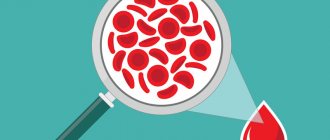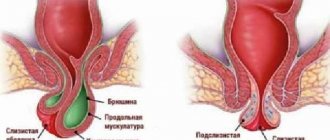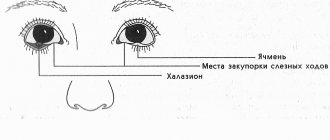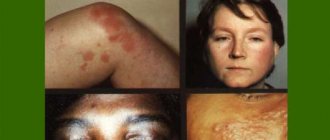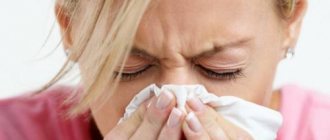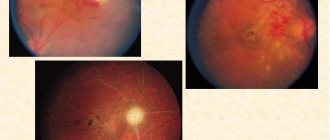| Infectious diseases | |
| Colorized electron micrograph shows the migration of the malaria pathogen through the intestinal epithelium. | |
| ICD-10 | 00.-99. |
| ICD-9 | 001-139001-139 |
| MeSH | D003141 |
Infectious diseases
are a group of diseases caused by the penetration of pathogenic (disease-causing) microorganisms, viruses and prions into the body.
In order for a pathogenic microbe to cause an infectious disease, it must have virulence
(toxicity; Latin virus - poison), that is, the ability to overcome the body's resistance and exhibit a toxic effect. Some pathogenic agents cause poisoning of the body with exotoxins released during their life processes (tetanus, diphtheria), while others release toxins (endotoxins) during the destruction of their bodies (cholera, typhoid fever).
One of the features of infectious diseases is the presence of an incubation period
, that is, the period from the moment of infection until the appearance of the first clinical signs.
The duration of this period depends on the method of infection and the type of pathogen and can last from several hours to several years (the latter is rare). The place where microorganisms enter the body is called the entry gate
of infection. Each type of disease has its own entrance gate, for example, Vibrio cholera enters the body through the mouth and is not able to penetrate the skin.
Classification
There are a large number of classifications of infectious diseases. The most widely used classification of infectious diseases by L. V. Gromashevsky:
- intestinal (cholera, dysentery, salmonellosis, escherichiosis);
- respiratory tract (influenza, adenovirus infection, whooping cough, measles, chicken pox);
- “blood” (malaria, HIV infection);
- external integument (anthrax, tetanus);
- with different transmission mechanisms (enterovirus infection).
Depending on the nature of the pathogens
infectious diseases are classified into:
- prion (Creutzfeldt-Jakob disease, kuru, fatal familial insomnia);
- viral (influenza, parainfluenza, measles, viral hepatitis, HIV infection, cytomegalovirus infection, meningitis);
- bacterial (plague, cholera, dysentery, salmonellosis, streptococcal, staphylococcal infections, meningitis);
- protozoans (amoebiasis, criticalosporidiosis, isosporiasis, toxoplasmosis, malaria, babesiosis, balantidiasis, blastocystosis);
- fungal infections, or mycoses, (athlete's foot, candidiasis, cryptococcosis, aspergillosis, mucormycosis, chromomycosis).
Causes of viral diseases
The cause of this type of disease is viruses. They are tiny particles and consist of nucleic acid and a protein shell. Viruses can only multiply in the cells of the affected organism.
Main routes of infection:
1. Airborne. The virus enters the human body through inhaled air. This is the most dangerous route of transmission, which, due to the speed of spread, often leads to the development of epidemics and even pandemics. Many viral diseases in children, influenza viruses, parainfluenza and a number of others are transmitted in this way.
2. Alimentary, household. The virus is transmitted through food, household items, and personal belongings of a sick person.
3. Parenteral. The virus enters the human body directly through the blood. Most often this happens when using contaminated syringes, surgical instruments, or unprotected sex.
The virus can enter the fetus's body from the mother's body, transplacentally. Viruses that are poorly adapted to survive in environmental conditions (rabies, HIV, hepatitis and a number of others) are usually transmitted parenterally.
Epidemiology
Disability-adjusted life year (DALY) due to infectious and parasitic diseases per 100,000 people in 2004[1].
no data ≤250 250-500 500-1000 1000-2000 2000-3000 3000-4000 5000-6250 6250-12500 12500-25000 25000-50000 ≥50000
The following table lists the infectious diseases that killed more than 100,000 people in 2002, according to WHO.
For comparison, data from 1993 is provided. Number of deaths in the world caused by infectious diseases
[2][3]
| Place | Cause of death | Died in 2002, million | % of all deaths | Died in 1993, million | Place in 1993 |
| N/A | All infectious diseases | 14.7 | 25.9% | 16.4 | 32.2% |
| 1 | Lower respiratory tract diseases[4] | 3.9 | 6.9% | 4.1 | 1 |
| 2 | HIV AIDS | 2.8 | 4.9% | 0.7 | 7 |
| 3 | Intestinal diseases[5] | 1.8 | 3.2% | 3.0 | 2 |
| 4 | Tuberculosis | 1.6 | 2.7% | 2.7 | 3 |
| 5 | Malaria | 1.3 | 2.2% | 2.0 | 4 |
| 6 | Measles | 0.6 | 1.1% | 1.1 | 5 |
| 7 | Whooping cough | 0.29 | 0.5% | 0.36 | 7 |
| 8 | Tetanus | 0.21 | 0.4% | 0.15 | 12 |
| 9 | Meningitis | 0.17 | 0.3% | 0.25 | 8 |
| 10 | Syphilis | 0.16 | 0.3% | 0.19 | 11 |
| 11 | Hepatitis B | 0.10 | 0.2% | 0.93 | 6 |
| 12-17 | Tropical diseases (6)[6] | 0.13 | 0.2% | 0.53 | 9, 10, 16-18 |
| Note: Other causes include maternal and infant mortality (5.2%), malnutrition (0.9%), non-communicable diseases (58.8%), and injuries (9.1%). | |||||
The leading causes of death are HIV/AIDS, tuberculosis and malaria. The mortality rate for almost all nosological units has decreased, but for AIDS this figure has increased 4 times. Pediatric infectious diseases include whooping cough, polio, diphtheria, measles and tetanus, as well as a high incidence of lower respiratory tract and intestinal diseases.
Historical pandemics
A pandemic (or global epidemic) is a disease that affects the population of a vast area of the globe.
- The Justinian Plague, from 541 to 750, killed between 50% and 60% of Europe's population.[7]
- The Black Death of 1347-1352 killed 25 million people in Europe within 5 years. In the 14th century, the plague reduced the population of the Old World from about 450 million to 350-375 million.
- The introduction of smallpox, measles and typhus into Central and South America by European explorers in the 15th and 16th centuries caused pandemics among the indigenous population. Between 1518 and 1568, disease pandemics caused Mexico's population to decline from 20 million to 3 million.[8]
- The first influenza epidemic in Europe occurred between 1556 and 1560. The mortality rate was 20%.[8]
- Smallpox killed approximately 60 million Europeans in the 18th century[9]
- In the 19th century, tuberculosis killed about one-quarter of Europe's adult population.[10]
- The 1918 influenza (or Spanish Flu) pandemic killed 25–50 million people (about 2% of the world's population).[11] Today, influenza kills between 250,000 and 500,000 people worldwide each year.
Fungal plant diseases
Fungal diseases are caused by various groups of pathogenic fungi. In terms of species composition, fungal plant diseases are the most common among pathogenic plant infections. In terms of negative effects on plants, the most dangerous and common are late blight, black leg, rot of the root and vegetative systems of plants, verticillium, fusarium, powdery mildew (false and true).
Late blight
Late blight is one of the most common plant diseases. It is spread by fungal spores that fall on plants or into the soil during rains, watering, and wind.
Late blight danger level
A particular danger of late blight lies in its ability to affect vegetable and other garden plants, trees and shrubs and fruit and berry crops. The infection penetrates underground organs (root system, tubers, bulbs, rhizomes). Of the aerial ones, it affects leaves, flowers, stems, ovaries and fruits. Eggplants, sweet peppers, tomatoes, strawberries/strawberries, potatoes, apple trees, indoor and greenhouse plants and other crops are especially affected by the fungus.
Late blight or late blight on tomato leaves. © Steve Johnson
External manifestation of plant late blight
Late blight appears in the second half of summer and spreads very quickly in damp rainy weather at temperatures within +24..+27 °C. Brown or gray-greenish spots appear on leaves and young shoots. Some are initially surrounded by a ring of whitish cobwebs, and later become completely covered with it. The spots merge, increasing the affected area. The leaves dry out and fall off (serve as a source of subsequent infection). Herbaceous crops die, and the fruits of trees and shrubs become unsuitable for food, processing, storage and transportation.
Read our detailed material: Late blight of tomatoes. Prevention and control measures.
Rotten
All types of rot damage mainly vegetable and other garden plants, young seedlings of some fruit crops and berries (blackleg, white, gray, brown, hard, clubroot, stem). There is no effective treatment for almost all rots. Diseased plants are removed from the site and burned.
External manifestations of plant rot
- Thinning of the seedling's leg (black leg).
- With brown rot, the root collar of plants softens and turns brown, and later turns black.
- White rot, when root crops are damaged, softens the tissues, turning them into mucus, and the root crop becomes covered with a white coating.
- Hard rot forms brownish-purple spots with black dots on the leaves. The middle of the spots is lighter than the edges. The spots merge into grayish affected areas of the leaf blades.
- Gray rot affects all above-ground plant organs, which become covered with grayish fluff, turn brown and become slimy.
- Fungal clubroot forms growths in the form of swellings on the roots of plants of any age stage. Plants wither for no apparent external reason and die.
- Stem rot, unlike other types, directly affects the inside of the stems. Unreasonably wilted plants are removed. On a cross section, white flakes are clearly visible. Stem rot is externally manifested by the development of the disease by the ringing and death of pedicels or parts of young stems of trees and shrubs.
Gray rot on grapes. © winetalk
Brown rot on cherries. © Thaddeus McCamant
Clubroot on cabbage roots. © Shelley
Some fungal plant diseases are called wilting diseases. This is due to the fact that for no apparent reason the plants begin to wither and die after a while. Such diseases, most familiar to summer residents, include verticillium, fusarium and others.
Verticillium
The disease is dangerous because it damages the vascular system of herbaceous and tree-shrub plants. The fungus spreads through the vessels (wood blackening) in acute and chronic forms. In the first case, the plant dies in 5-10 days, in the second it can live longer, but there is no need to use the fruits of such plants for food.
External manifestation of verticillium
Verticillium is a plant vascular disease. It begins to manifest itself with wilting and yellowing followed by falling leaves, starting from the middle part of the crown. Flowers and ovaries wrinkle, turn brown and dry out. Young leaves are chlorotic and are preserved only on the tops of plants (where the mycelium of the fungus has not grown). The mycelium releases toxins that poison plants. On a cross section of wilted stems, damaged vascular vessels in the form of black dots are visible. A longitudinal section shows gum filling the vessels.
Verticillium on strawberries. © NIAB EMR
Danger level
Verticillium infestation starts from the roots to the top of the plants. Therefore, when external signs of the disease appear, most of the plant is affected by the fungus and it is impossible to save it. Pathogenic fungi persist in the soil for up to 15 years and actively infect plants at temperatures below +20 °C.
Verticillium affects all garden plants, flowering annuals and perennials, coniferous and broad-leaved forest and park crops, fruit berry fields and gardens, and weeds.
Fusarium
Fusarium fungal infection spreads through the soil, primarily affecting the root system of the plant. The disease is common in all regions, regardless of climatic conditions.
Fusarium hazard level
Fusarium is dangerous because it damages a large range of herbaceous, floral, annual and perennial plants and tree and shrub crops. Moreover, plants are affected by the fungus at any age.
Fusarium can manifest itself as tracheomycosis wilt, affecting roses, conifers, and rhododendrons. Among indoor plants, zygocacti, cyclamens, orchids, balsams and other plants are most often affected.
Fusarium on pepper
External manifestations of fusarium
The fungus reaches the root collar through the roots, where over time a pink coating (sometimes black) forms, and the entire root becomes covered with a white coating. The tissues of the organs rot, and the mycelium, rising through the vessels to the aboveground part, causes yellowing of the leaves with the formation of separate watery areas of light yellow and other shades. Thinning of stems, wilting of inflorescences, cobs, fruits, followed by death of the entire plant. A distinctive sign of fusarium is a delicate white coating on the upper part of the leaf blades. The petioles weaken, the leaves hang along the stem.
Powdery mildew
Powdery mildew is considered one of the most dangerous diseases of vegetable and garden crops, flower beds, gardens and berry fields. In terms of negative effects on plants, downy mildew and powdery mildew are very similar, and in terms of external manifestation, each type has its own characteristics.
Distinctive features of powdery mildew
Powdery mildew forms simultaneously on all parts of the diseased plant. The entire plant becomes covered with a powdery whitish coating, the leaves curl up and become limp, but do not fall off. The disease is caused by a violation of agricultural cultivation and care practices (thickening, temperature changes, lack of nutrition).
Read our detailed material: Measures to combat powdery mildew.
Downy mildew begins with spots on the upper part of the leaf blades of the crop (colorless or yellowish-chocolate, brownish) and the simultaneous appearance of gray mold on the underside. The crop usually gets sick during periods of sharp changes in day and night temperatures.
Read our detailed material: Downy mildew.
Powdery mildew on strawberry leaves. © Plantpathfinder
What crops are affected by powdery mildew?
Downy and true powdery mildew primarily affects plants with pubescent leaves (pumpkin - cucumbers, zucchini, squash, pumpkins). Other crops include radishes and radishes, peas and salads, beans, dill. Roses, gerberas, zinnias, phloxes, and begonias are severely damaged by dew from flowering plants. Indoor plants are also susceptible to dew disease: collanchoe, violets, orchids and others. Of the berry and fruit crops, one can note an increased susceptibility to mildew diseases: gooseberries, currants, pears, apple trees, plums and other crops.
The greatest damage in open ground is associated with morning dew and watering with cold water. Protected - with a high level of air humidity (more than 90%) and watering with cold water.
Methods for protecting crops from fungal diseases
Preventive
Maintain a weed-free garden plot and remove all garden and garden post-harvest residues. Diseased grass crops should be removed and burned. In autumn and spring, clear tree trunks, install and change hunting belts to prevent the penetration of disease carriers into the tree crown (ants and other insects and arthropods).
Agrotechnical
Fulfill all cultural requirements for agricultural cultivation technology. Be sure to treat (disinfect) seeds, bulbs, tubers and other seeding and planting material, including seedlings of shrubs and trees.
Chemical control measures
Bordeaux mixture, iron sulfate, zineb, keltan, oxychome, foundationazole and others. When treating plants, use only preparations approved by the annual list for processing vegetables, garden crops, trees, shrubs and park species.
Biological control measures
Plant protection begins from the first days. The seeds and root system of seedlings are treated with growth regulators (ovary, bud, epin, gum, athlete, heteroauxin, rootin and others).
To enhance resistance to bad weather and other negative conditions, plants are treated during the growing season with immunomodulators (sodium humate, gum, amulet, zircon, epin). For diseases, biofungicides are used - phytosporin, alirin, gamair, planriz, phytodoctor, pseudobacterin-2, trichodermin, previkur, barrier and others. It is better to use biological products in tank mixtures, having previously checked them for compatibility.
Prevention
Preventive measures:
- deratization, disinsection - destruction of potential carriers and vectors of infection (rats, mosquitoes, lice);
- increasing the body's resistance through hygiene and physical education;
- carrying out preventive vaccinations;
- quarantine measures;
- cure the source of infection.
Quarantine is a set of measures to stop the spread of infection, this includes isolating previously ill people, disinfecting the place of residence, identifying those in contact with sick people, and so on.
Papillomas
These are benign formations on the skin that occur when the human papillomavirus enters through microdamages. The main route of transmission is contact. It is worth remembering that this is not necessarily contact with papilloma: there is information about the release of the virus without the appearance of typical formations on the skin.
The good news is that the virus does not penetrate the body further than the skin; it is enough to remove the papillomas surgically. The bad news is that the disease has a long incubation period. Papilloma can form several years after infection. The virus can also remain on public objects for a long time.
Notes
- World Health Organization.
Age-standardized DALYs per 100,000 by cause, and Member State, 2004 (February 2009). Archived from the original on August 25, 2011. - The World Health Report (Annex Table 2) (pdf) (2004). Archived from the original on August 25, 2011.
- Table 5 (pdf) (1995). Archived from the original on August 25, 2011.
- Lower respiratory tract diseases include early pneumonia, influenza and bronchitis.
- Intestinal diseases include cholera, botulism and E. coli, among others. See also: Intestinal infectious diseases
- Tropical diseases include Chagas disease, dengue fever, lymphatic filariasis, leishmaniasis, onchocerciasis, schistosomiasis and trypanosomiasis.
- “Infectious and Epidemic Disease in History” Archived November 19, 2012 on the Wayback Machine
- ↑ 1 2
Dobson, Andrew P, Carter E Robin (1996).
"Infectious Diseases and Human Population History". BioScience 46
: 115–126. DOI:10.2307/1312814. - "Smallpox" North Carolina Digital History.
- Multidrug-Resistant "Tuberculosis". Centers for Disease Control and Prevention.
Archived copy from March 9, 2010 on the Wayback Machine - "Influenza of 1918 (Spanish Flu) and the US Navy"
Molluscum contagiosum
A viral disease that manifests itself as skin lesions with the formation of hemispherical nodules with a depression in the center. In the nodule itself, white contents can be distinguished.
Although these elements do not form on the palms, the virus spreads very easily due to poor hygiene. Especially if the handshake took place after visiting the toilet: in adults, molluscum contagiosum is often located in the genital area. Treatment is only surgical. Trying to remove nodules yourself is not recommended - there is a high risk of self-infection in the process.
Intestinal infections
Salmonellosis. About 700 species of serovars of the genus Salmonella can act as pathogens. Infection can occur through water, household contact, or nutrition. The proliferation of these bacteria, accompanied by the accumulation of toxins, is possible in various food products and persists if they are insufficiently heat treated during cooking. Also, domestic animals, birds, rodents, and sick people can act as a source of infection.
The consequence of the action of toxins is an increase in the secretion of fluid into the intestine and increased peristalsis, vomiting and diarrhea, which lead to dehydration of the body. After passing the incubation period, which lasts from 2 hours to 3 days, the temperature rises, chills, headache, colicky pain in the abdomen, nausea, and after a few hours - frequent watery and foul-smelling stools. These bacterial diseases last approximately 7 days.
In some cases, complications may occur in the form of acute renal failure, infectious-toxic shock, purulent-inflammatory diseases or thrombotic complications.
Typhoid fever and paratyphoid fevers A and B. Their causative agents are S. paratyphi A, S. paratyphi B, Salmonella typhi. Routes of transmission: food, water, infected objects, source: sick person. A feature of the disease is summer-autumn seasonality.
The duration of the incubation period is 3–21 days, most often 8–14, after which the temperature gradually increases up to 40ºС. Fever is accompanied by insomnia, headache, lack of appetite, pale skin, roseola rash, enlarged liver and spleen, bloating, stool retention, and less commonly, diarrhea. Arterial hypotension, bradycardia, delirium, lethargy also accompany the disease. Possible complications are pneumonia, peritonitis, intestinal bleeding.
Food poisoning. Its causative agents are opportunistic microorganisms. Pathogenic bacteria enter the body from food products that are either not subject to heat treatment or have undergone insufficient heat treatment. Most often these are dairy or meat products, confectionery products.
The incubation period lasts from 30 minutes to a day. The infection manifests itself in the form of nausea, vomiting, watery stools up to 15 times a day, chills, abdominal pain, and fever. More severe cases of the disease are accompanied by low blood pressure, tachycardia, convulsions, dry mucous membranes, oliguria, and hypovolemic shock. The disease lasts from several hours to three days.
Dysentery. The causative agent of one of the most common intestinal infections is a bacterium of the genus Shigella. Microorganisms enter the body when ingesting contaminated food, water, through household items and dirty hands. The source of infection is a sick person.
The incubation period can range from several hours to a week, usually 2-3 days. The disease is manifested by frequent loose stools mixed with mucus and blood, cramping pain in the left and lower abdomen, fever, dizziness, chills, and headache. It is also accompanied by arterial hypotension, tachycardia, bloating, palpation of the sigmoid colon. The duration of the disease depends on the severity: from 2-3 to 7 days or more.
Escherichiosis. This disease is also called traveler's diarrhea. It is caused by Escherichia coli enteroinvasive or enterotoxigenic strains.
In the first case, the incubation period lasts from 1 to 6 days. Signs of the disease are loose stools and cramping abdominal pain, less commonly tenesmus. The duration of illness is 3-7 days with mild intoxication.
In the second case, the latent period can last up to 3 days, after which vomiting, frequent loose stools, intermittent fever and abdominal pain begin. Pathogenic bacteria largely affect young children. The disease is accompanied by high temperature, fever, and dyspeptic symptoms. Such bacterial diseases can be complicated by appendicitis, cholecystitis, cholangitis, meningitis, endocarditis, and inflammatory diseases of the urinary tract.
Campylobacteriosis. This is a common infection caused by the bacterium Campylobacter fetus jejuni, which is found in many pets. Occupational bacterial diseases in humans are also possible.
The incubation period lasts 1 – 6 days. The disease is accompanied by fever, gastroenteritis, severe intoxication, vomiting, and profuse loose stools. In rare cases, a generalized form of the disease.
Types of dangerous infectious diseases
Just one and a half to two centuries ago, epidemics were responsible for the disappearance of entire states. The mechanism of transmission of the epidemic works in different ways: this includes neglect of personal hygiene rules, unsanitary conditions, immoral behavior and much more. Most often, the culprit behind the transmission rate is favorable climatic conditions: high humidity and warm weather. Listing the most dangerous infectious diseases in terms of their properties, we highlight the main ones.
- Dysentery. The pathogen retains its properties in various environments: linen, feces, food, on household items, in moist soil. Does not tolerate exposure to high and low temperatures, sunlight, and disinfectants. It often settles on the surface of vegetables and fruits, milk, and unfiltered water.
- Cholera. It acts by damaging the gastrointestinal tract, disrupting the water-salt balance, and causing dehydration. At the first sign, strict quarantine is applied, reducing contact with healthy people to a minimum. It is transmitted strictly by the fecal-oral route; the cause of infection is neglect of personal hygiene rules, eating unwashed fruits, berries and vegetables. The human body is not adapted to fight this type of disease; there is practically no resistance.
- Hepatitis. A special type of virus that attacks one of the main human organs of the body, the liver. There are two types of transmission of infection: by entering the gastrointestinal tract with unwashed or improperly prepared food and as a result of surgical operations, medical procedures, or blood transfusions. The cause of infection can be the banal reuse of a disposable injection syringe. The incubation period is different: in the first case, when the virus is supposed to be ingested with food, this period is no more than 50 days, in the case of blood transmission up to 200. A person who has had Botkin’s disease is a threat to people who have not had this disease, since the virus lasts is in the blood throughout life.
- Botulism. A spore viral pathogen with many varieties. A persistent and tenacious virus in normal environments, capable of surviving in extreme conditions. The only way to kill is by using high temperatures (120 degrees) or using strong disinfectants. It grows and develops in the complete absence of oxygen; the main source is meat and fish food. A favorable environment is considered to be a temperature of 37 degrees, at which a strong toxic substance is released that is 350 times stronger than the venom of a rattlesnake.
Hepatitis, an inflammatory disease of the liver caused by a virus, is one of the most dangerous infectious diseases.
In addition to the listed diseases, many “representatives” of these dangerous ailments that lie in wait almost everywhere have not been named. You can add tuberculosis, diphtheria, HIV, sexually transmitted infections and others to the list, no less dangerous and insidious for the human body. Compliance with hygiene rules and disease prevention will help to significantly reduce the risk of contracting the virus; the main thing is to remember and follow the simplest requirements aimed at personal safety.
Necrotic spots
Another pathology that can lead to rapid death is necrotizing fasciitis. This is a very serious bacterial infection. May appear after food poisoning, various operations, childbirth and chronic diseases. The symptoms of the disease are similar to the flu, but it is often called acute skin gangrene. As soon as characteristic dark spots appear on the body, you should immediately seek help and be treated with antibiotics. If this is not done, the matter will end in death.
Everything you need to know about antibiotics. Infographics Read more
Fungi
Fungi have a relatively more complex structure than bacteria; most of them are multicellular organisms, shaped like a thread. Fungi are divided into species, which in turn have several groups. They cause many sexually transmitted infectious diseases. Their habitats are the skin, hair, nails, but there are also those that form and develop in the internal organs of the body. For the most part, fungi are saprophytes and live peacefully with people and animals, but there are also those that become causative agents of diseases dangerous to health. When identifying the main groups, it is necessary to take into account the difference in their structure and characteristics.
There are several groups of fungal microorganisms that affect the skin, nails and internal organs of humans
- Pathogenic. Three main types of fungi pose a direct threat to the health of the body. Causative agents of deep mycoses, radiant fungi that provoke actinomycosis and yeast-like culprits of a severe disease called blastomycosis.
- Imperfect. This type of fungus is the main culprit in the manifestations of dermatomycosis.
- Non-pathogenic. Representatives of this type spread in the form of yeast and mold.
Chronic diseases: why they worsen in the fall
Seasonality is characteristic of many chronic diseases.
“This is explained both by disruptions in biorhythms, due to the transition from one season to another, and by a change in lifestyle, as well as a lack of sun,” says Natalya Shmoilova, general practitioner, head of the Family Medicine Department at the MEDSI Clinic. “In our country, where seasonal temperature changes are significant, the body has to adapt to each season, mobilizing all its defenses, immune, hormonal and neurovegetative mechanisms.” It is not surprising that under conditions of such increased stress, chronic ailments make themselves felt.
“In autumn, first of all, diseases of the digestive, respiratory, urinary and nervous systems worsen,” says Tatyana Melnikova, general practitioner, consultant at the Invitro Independent Laboratory.
“In order for the seasonal restructuring of the body to be as painless as possible, it is necessary to support it during this difficult period.”
Cystitis
Autumn is the time of cystitis, since it is during this period that we often become hypothermic. “To prevent cystitis, proper clothing is important,” reminds Tatyana Melnikova. — In wet weather, forget about short skirts, thin tights, and low-waisted pants.
You should also not wear tight underwear - this has a bad effect on local blood circulation, and therefore on general well-being. But the body is able to effectively resist infections only when it is completely healthy.
Drink enough fluid (at least 1.5–2 liters per day) and try to empty your bladder every 2-3 hours. Avoid the urge to urinate. This can cause backflow of urine into the ureters, congestion in the bladder and ischemia of the bladder wall.
Problems with stool are also an unfavorable factor for cystitis. Try to eat healthy and be active: this promotes normal bowel function.”
Peptic ulcer
It has been established that the main cause of ulcers is infection. Its causative agent is Helicobacter pylori.
Other factors (unbalanced diet, alcohol abuse, stress and erratic daily routine) only contribute to the excessive production of hydrochloric acid - a natural aggressor, which leads to a decrease in the protective properties of the mucous membranes and walls of the stomach.
“Before the start of an unfavorable season, assess your condition without waiting for the next exacerbation,” advises Tatyana Melnikova. — You can get tested for the amount of antibodies to Helicobacter pylori in the blood.
In autumn, watch your diet especially carefully. A large amount of hydrochloric acid is produced when eating rich, protein, and fatty foods. Meals should be frequent (5-6 times a day) and fractional (small portions). In addition, strengthen your immune system. Temper yourself, lead an active lifestyle, take multivitamins, and do not suffer from colds on your feet.
Neuroses and depression
It is believed that the exacerbation of neurotic disorders in the fall is caused by a deficiency of the sun, and therefore vitamin D, as well as hormonal fluctuations.
The metamorphoses occurring in nature also do not contribute to a rosy mood: the duration of daylight hours is shortening, the leaves are flying away, it is raining, and it is becoming colder every day.
This is especially acute for people with unstable psyches.
If you find yourself caught in the fall blues, first of all, remember that it will soon pass. Do not abuse coffee and strong tea, give up alcohol and cigarettes. Take a course of multivitamins, exercise and go to bed on time. Treat yourself to bananas and dark chocolate.
They promote the production of the joy hormone in the body - serotonin. The sun is the best antidepressant. Take advantage of every nice day to be outdoors. It has been noticed that people who walk a lot are less susceptible to neurotic disorders.
You will find even more useful tips on how to resist autumn depression here.
Bronchitis
In cold, rainy weather, when air humidity is high, cases of exacerbation of chronic bronchitis become more frequent. “Under no circumstances suffer an exacerbation of bronchitis on your legs and do not self-medicate,” says Natalya Shmoilova.
— Bronchitis is fraught with serious complications, especially in old age. If a cough that starts does not go away within a week, chest pain appears when breathing, does not subside or the temperature rises again, consult a doctor immediately: these may be signs of pneumonia.” Drink plenty of warm liquids.
As prescribed by the doctor, you can take expectorants and sputum thinners. To support your body, your doctor may also prescribe multivitamins. The most reliable prevention of seasonal exacerbation of bronchitis is to avoid hypothermia. Special gymnastics that develop the respiratory muscles will also help you.
Pay attention to yoga breathing practices. You can read about it here.
Rickettsia
It is rickettsia that are responsible for epidemics of typhus and other infectious diseases. Rickettsia is a cross between viruses and bacteria, the so-called middle link. Rickettsia are smaller in size than bacteria. They do not develop in an artificial nutrient medium and this is their main difference from bacteria. Almost all diseases included in the group of rickettsioses are caused by infection with this type of pathogen.
Rickettsia are small rod-shaped microorganisms that occupy an intermediate position between viruses and bacteria
Viruses
Viruses are representatives of microorganisms that cannot be seen without the use of powerful electronic optical instruments. They are the culprits of diseases such as influenza, measles, encephalitis, and polio. Viruses are distinguished not only by their complexity, but also by their diversity and complexity of structure. This type of parasite continues its development only according to the principle of intracellular life of the carrier. The compound, which is a nucleic acid, is the main component of the virus. This compound is the basis for the mutation of the virus, and in other words, it can acquire a different form of life.
Viruses are one of the most complex microorganisms that cause dangerous infectious diseases and epidemics
Treatment of bacterial diseases
When a bacterial infection is diagnosed, treatment with antibacterial drugs is prescribed. To destroy the pathogen, several groups of antibiotics are used - with a bacteriostatic effect (suppress the reproduction and growth of bacterial cells) and bactericidal (kill bacteria). Antibacterial drugs from the group of monobactams, cephalosporins, quinolones and penicillins are prescribed exclusively by a doctor on an individual basis.
To slow down the growth of pathogenic flora, use Chloramphenicol and Tetracycline tablets (orally). To destroy the pathogen, Rifampicin and Penicillin in capsules and ampoules (intramuscular) are prescribed. Symptomatic therapy is prescribed in combination:
- non-steroidal anti-inflammatory drugs - Ibuprofen, Indomethacin are used for analgesic effect for pain of different localization;
- Regidron saline solution - prescribed for acute intoxication of the body;
- antiseptics - SeptIfril, Stopangin, Strepsils, Ingalipt will help with throat infections;
- Physiotherapy procedures are used to cleanse the nose: inhalation using a nebulizer with Aqualor and Dolphin solutions;
- antibacterial suppositories/ointments – Metronidazole, Diflucan are used topically to treat bacterial infections in gynecology/urology;
- antihistamines - Allegra, Tigofast are prescribed for bacterial allergies;
- Polysorb sorbent – used for gastric lavage for intestinal infections;
- Tannin powder - used to treat dermatological infections;
- sorbents and probiotics Laktofiltrum, Linex - for intestinal restoration.


